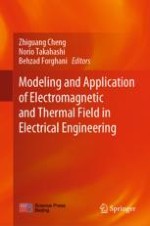2020 | OriginalPaper | Buchkapitel
4. Solution of Coupled Electromagnetic and Thermal Fields
verfasst von : Behzad Forghani
Erschienen in: Modeling and Application of Electromagnetic and Thermal Field in Electrical Engineering
Verlag: Springer Singapore
Aktivieren Sie unsere intelligente Suche, um passende Fachinhalte oder Patente zu finden.
Wählen Sie Textabschnitte aus um mit Künstlicher Intelligenz passenden Patente zu finden. powered by
Markieren Sie Textabschnitte, um KI-gestützt weitere passende Inhalte zu finden. powered by
